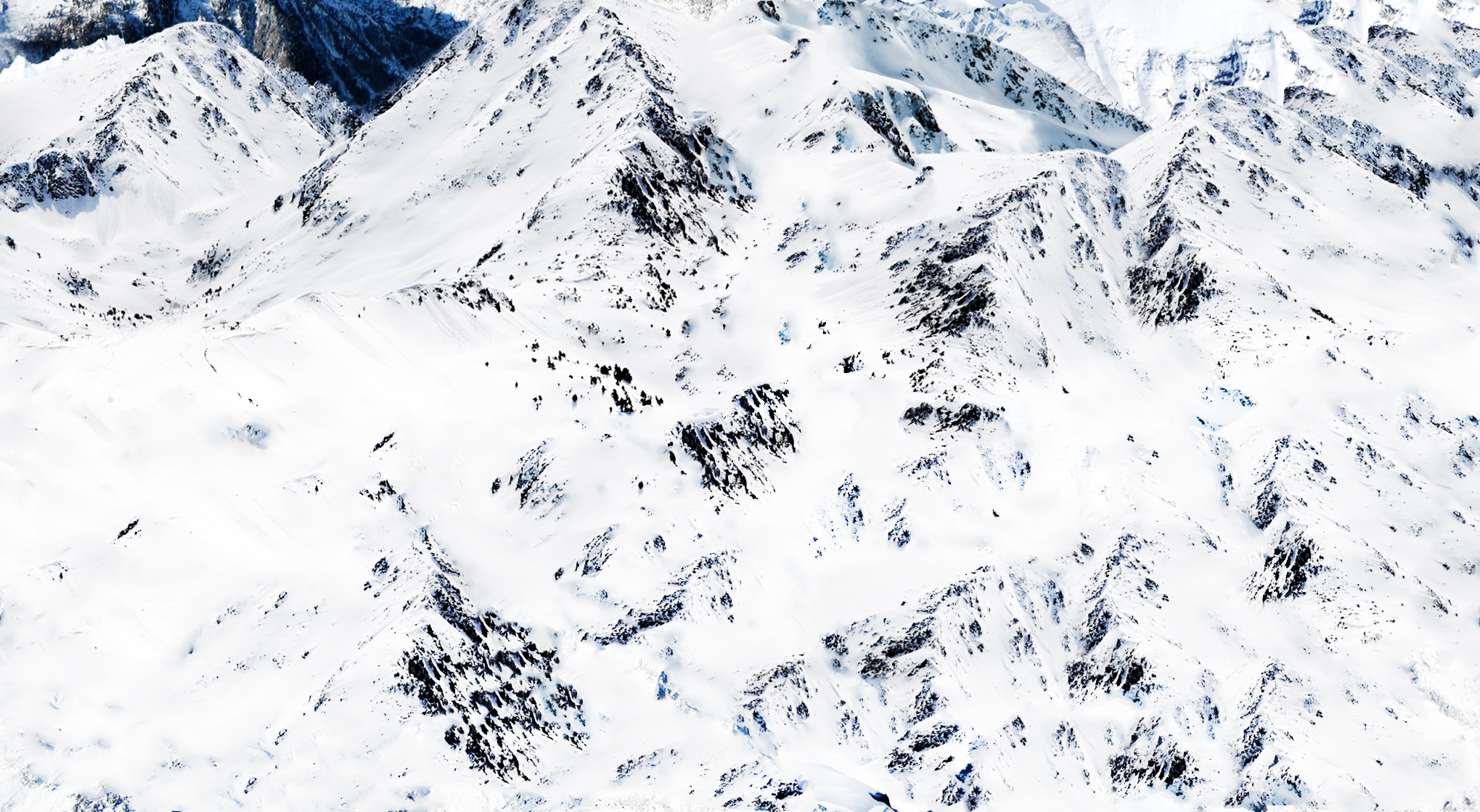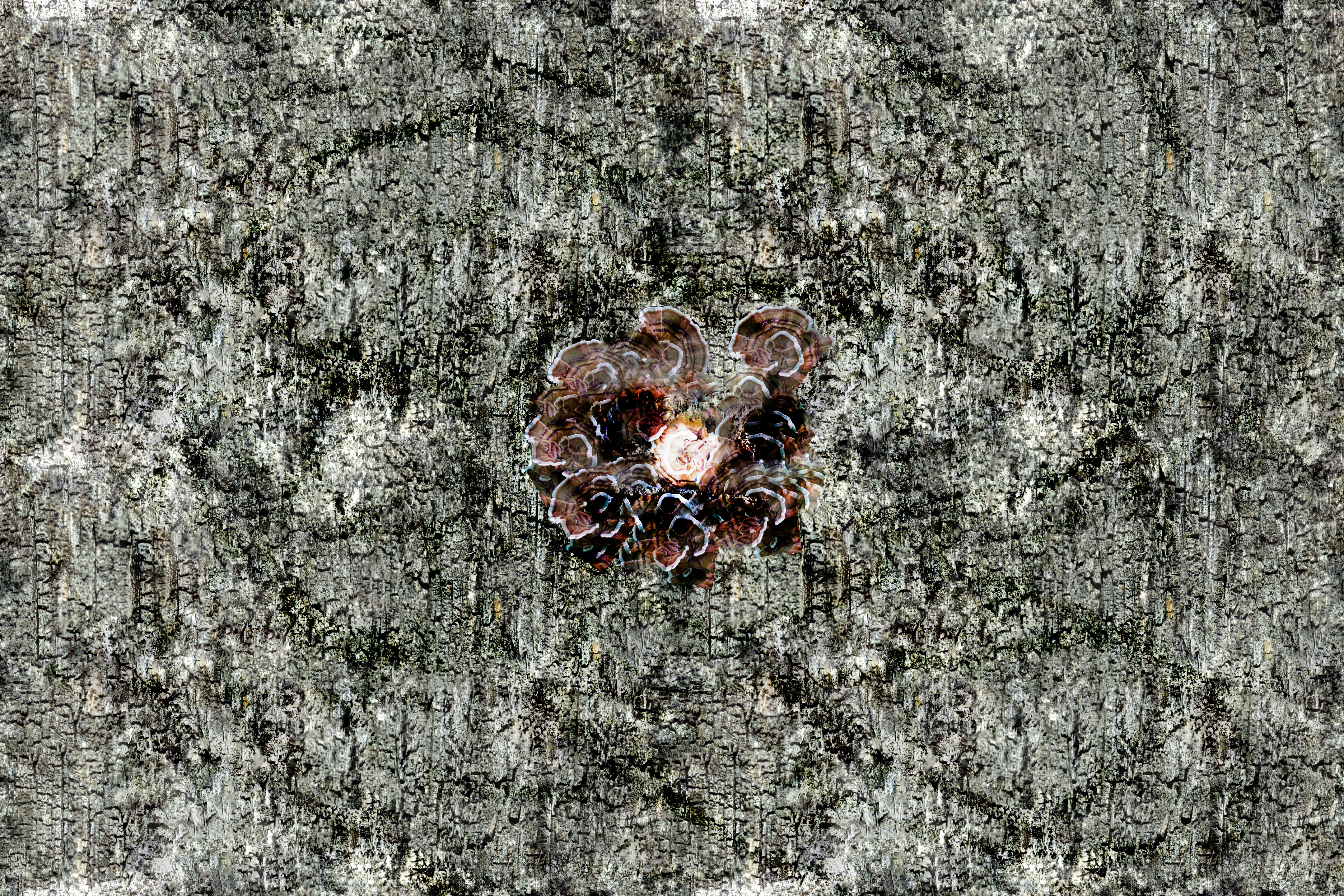
Above is my scrapped seamless texture of a snowy mountain
Thus, I scrapped the snowy mountain idea, and moved on to a different image, choosing to use tree bark, partially because of a desire for consistency (I had used a wooden floor in class when we were learning about seamless textures, so tree bark kept a wooden theme) and partially because I had an idea for what sort of contrasting environmental elements I might want to implement.
I was inspired by the image shown in class about the purple mountains and white rectangular prism to create a work that emphasized juxtaposition of contrasting elements (dissonance), which is why I pursued the idea of contrast as opposed to the other path of complimentary. The contrast that I wanted to implement was two-fold, and both were dependent on the characteristics of the seamless texture.
Firstly, the texture itself is extremely dull because it is mostly gray in color and has a lot of earthy tones. I wanted to play off this by choosing an element that was more colorful, but in order to reduce the shock effect, I chose to look for an object that also had earthy tones (as opposed to a neon-pink color, for example).
Considering the two points of juxtaposition that I wanted to pursue, I decided upon two contrasting environmental elements, fungus and fire. Fungus traditionally represents decay, and fire represents destruction, and both of those contrast nicely with wood, which symbolizes healing and life. Furthermore, to emphasize the contrast, I arranged the fungus in an almost Fibonacci-like sequence, giving it the image of a flower. Using the burn tool in photoshop, I darkened parts of the fungus flower and accented its floweriness by lightly tracing a burn pattern in petal-like shapes on the surrounding wood. I then used the dodge tool to brighten the very center of the fungus flower, which is also oriented differently compared to the rest of the flower, both to emphasize its central position and to give off the illusion of a fiery core. The white accents of the fungus itself also serve as highlights on the fungal flower petals, contrasting extremely well with the burnt part of the fungus.
Within the beauty portrayed by the flower and fire, I interwove more disturbing elements. For example, the burn marks on the fungal flower vaguely trace the image of a creepy face, and the center piece of the Fibonacci-flower is slightly offset from the center of the work, which adds a degree of asymmetry. Furthermore, the Fibonacci-flower does not accurately flower the Fibonacci placement, instead coming closer, but never completing, a circle. I also purposefully changed the orientation of the center fungus (it has a C-shape while the rest of the fungi exhibit backward C-shapes). These latter three design choices, by introducing asymmetrical elements into the picture, I hoped to elicit subtle feelings of discomfort.
Finally, Ironic symbolism is the most prevalent theme in my seamless texture, because the wooden bark background is extremely dull in comparison to the neatly arranged and flashy fungal flower. However, it is the dull wooden background that represents life, while the fiery beauty of the fungal flower is a testament to decay and death. A partial message that might be interpreted from this conscious design choice is something similar along the lines of all that glitters is not gold. I hope that this provocative work elicits awe in the viewer as they appreciate the mesmerizing flare of the centerpiece, but this awe cedes to a contemplative mood as the viewer notices the juxtaposition of contrasting elements and ironic symbolism. Overall, I hope that this work captures the idea of the transience of life and beauty before they succumb to the imminent decay of oblivion.
